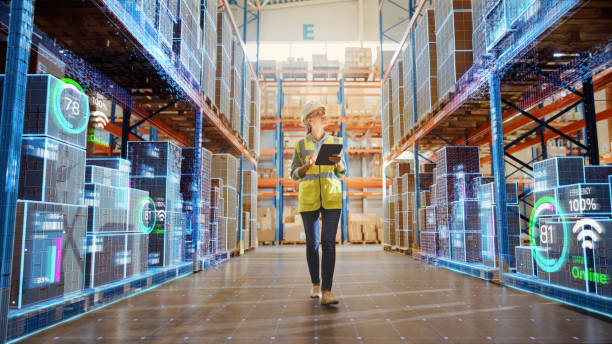Smart Warehousing, Simplified

Q1. Could you start by giving us a brief overview of your professional background, particularly focusing on your expertise in the industry?
I’m Ashutosh Kumar Verma, a Supply Chain Specialist in Gurgaon with over ten years' experience in manufacturing, warehousing, and 3PL. I've worked with major firms such as Talbros Automotive, Alpha Maier, Ecom Express, Seabird Logistics, and currently the Ethics Group.
My expertise lies in designing and executing scalable, data-driven solutions for warehousing and transportation. I've led over 70+ warehouse solution projects across India, spanning layout design, automation planning, and techno-commercial proposal building for high-volume clients such as Tata Motors, Rane Madras, Autoliv, PepsiCo, Carlsberg, AIIMS, MG Motors, PMBJP, and DSV.
I specialize in:
- Warehouse layout planning
- Process optimization
- Space modelling
- Cycle time studies
- Automation integration
- ERP/WMS implementation
My work bridges engineering precision with operational agility, supporting clients across various industries, including FMCG, automotive, e-commerce, and pharmaceuticals.
Q2. What key trends are shaping the future of warehouse and supply chain solution design—especially in high-volume, high-velocity industries like e-commerce and automotive?
Key trends include:
- Adoption of automation technologies like AMRs, AGVs, Autostore, and ASRS to enhance order fulfillment speed and accuracy.
- Flexible, modular warehouse design to support fluctuating demand and SKU diversity with the use of Docking with conveyor, along with automatic doors.
- Sustainable operations, using energy-efficient infrastructure, optimized packaging, and reduced carbon footprints.
- Connected inventory systems that provide real-time visibility and support multi-channel fulfilment.
Solution Design Approach:
1. Warehouse Layout: Maximizing space utilization for inventory variations.
2. Process Optimization: Lean inbound-to-outbound flows, reducing or eliminating non-value-adding activities.
3. Automation Integration: Use of AGVs, sorters, and zone-picking systems to enhance efficiency.
4. Data-Driven Design:
- Order patterns & SKU velocity analysis
- Inventory turnover & labor utilization mapping
5. Techno-Commercial Proposals:
- ROI-based investment planning for automation
- Capex vs Opex analysis
- Cost-saving projections
Q3. How are AI and digital tools transforming traditional supply chain and warehouse solution design?
AI and digital tools are unlocking next-level visibility and precision. For example:
- Predictive analytics help anticipate demand spikes and optimize inventory stocking.
- Digital twins and simulations enable the virtual modeling of warehouse flows, allowing for design testing before physical implementation.
- AI-powered demand planning, predictive maintenance, and dynamic routing improve real-time decision-making, reduce costs, and enhance responsiveness.
These tools collectively transform static operations into intelligent, adaptive supply chains.
Q4. How do the needs of sectors like apparel, electronics, FMCG, and pharma differ when it comes to designing logistics and supply chain solutions?
Each sector demands a customized solution:
Apparel:
- High SKU diversity and high return rates
- Requires flexible racking, automated picking, and reverse logistics
- Mobile robots with rack/tote-to-person picking are ideal for flat packs, hanging garments, and accessories
Electronics:
- High-value items need secure, dust-free zones
- Emphasis on batch-level tracking and static-safe handling
FMCG:
- Requires high throughput, short shelf life management, and strict FIFO/FEFO controls
- The layout must support fast replenishment and bulk dispatch
Pharma:
- Demands regulatory compliance, cold chain integrity, and serial-level traceability
- Must support batch control, expiry tracking, and lifecycle visibility
Solution design must align with the specific storage, handling, and compliance requirements of each sector.
Q5. Would you say Indian logistics firms have developed a strong capability in managing scalability and peak-season complexity?
Yes, Indian logistics firms have undergone significant maturation, especially since the COVID-19 pandemic. Investments in automation, flexible warehousing, and real-time visibility platforms have enabled better scalability.
Challenges still exist in infrastructure and last-mile delivery in certain geographies, but overall, the adoption of integrated and tech-driven approaches is positioning Indian firms well for peak season and demand surges.
Q6. Where do you see the biggest opportunities for logistics solution design in the next 2–3 years—urban fulfilment, regional hubs, cold chain, or automation?
All four are important, but the top opportunities lie in urban fulfilment and automation:
- Urban Fulfilment Centers: To support same-day/next-day delivery, especially in metro cities.
- Regional Hubs: Crucial for cost-effective coverage in Tier-2/Tier-3 markets.
- Automation: For scalable and efficient fulfilment as SKU variety and order volumes grow.
- Cold Chain: Expanding due to growth in pharma (Like Medicines) and perishable goods (Vegetables, Flowers, and Plants, etc.).
Future-ready solutions will combine proximity, automation & visibility.
Q7. If you were an investor looking at companies within the space, what critical question would you pose to their senior management?
“How are you leveraging technology and data analytics to build scalable, flexible, and sustainable supply chain solutions that can adapt to rapidly changing market demands and regulatory environments?”
Comments
No comments yet. Be the first to comment!
